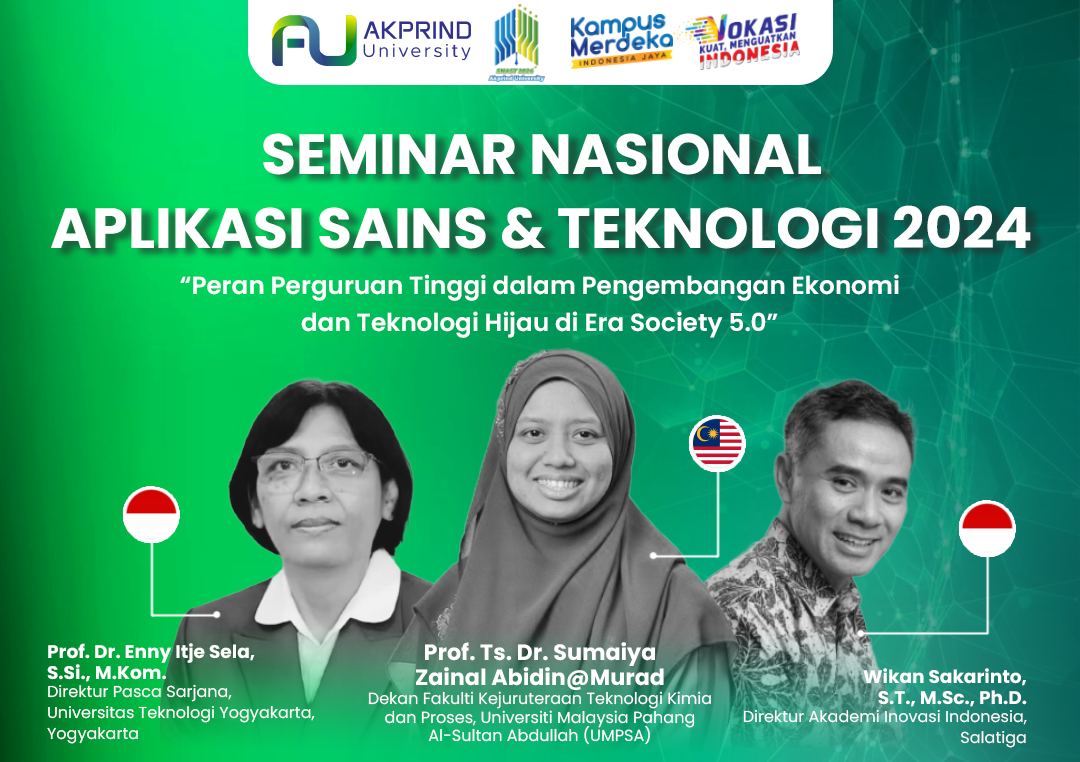EFEKTIVITAS PENGENDALIAN MUTU TERINTEGRASI UNTUK MENINGKATKAN KONSISTENSI KUALITAS BENANG KATUN DALAM INDUSTRI PEMINTALAN
DOI:
https://doi.org/10.34151/prosidingsnast.v1i1.2767Keywords:
Cotton yarn, quality control, fishbone analysis, yarn defects, textile industryAbstract
This study aims to identify and control the primary factors causing defects in Cotton 30 W yarn at PT Bintang Asahi Textile Industry using fishbone analysis. The research hypothesis states that yarn defects are caused by variations in raw material quality, insufficient operator accuracy, suboptimal mixing methods, and unfavorable environmental conditions. Data collected included Ne and TPI checks on uneven yarn samples analyzed from the packing area. The results revealed inconsistencies in TPI values for dark yarns, attributed to inconsistencies in raw materials and operational factors. Improvement measures are proposed, including selecting raw materials based on micronaire standards, retraining operators, and adjusting production methods. These findings highlight the importance of stringent quality control in the production process to enhance consistent yarn quality. Implementing these results is expected to increase product competitiveness in the global market by meeting export quality standards.
References
Aiman, M. (2023). Analisis kecacatan produk pada mesin pemotongan dengan menggunakan metode fmea di ud. abdi rakyat. Jurnal Teknik Industri Jurnal Hasil Penelitian Dan Karya Ilmiah Dalam Bidang Teknik Industri, 9(2), 577. https://doi.org/10.24014/jti.v9i2.23835
Almoughni, H. and Gong, R. (2014). Capillary flow of liquid water through yarns: a theoretical model. Textile Research Journal, 85(7), 722-732. https://doi.org/10.1177/0040517514555797
Athallah, Y. (2023). Penerapan seven tools untuk mengendalikan kualitas produk cacat pada produk konveksi di umkm x. Jurnal Serambi Engineering, 8(3). https://doi.org/10.32672/jse.v8i3.6295
Bintang, H., Khairunnisa, H., & Qomaruzzaman, G. (2022). Pengaruh tekanan udara nozzle pada mesin muratec vortex spinning terhadap kualitas benang. Jurnal Tekstil Jurnal Keilmuan Dan Aplikasi Bidang Tekstil Dan Manajemen Industri, 5(1), 19-26. https://doi.org/10.59432/jute.v5i1.19
Cai, Y., Cui, X., Rodgers, J., Thibodeaux, D., Martin, V., Watson, M., … & Pang, S. (2010). An investigation on different parameters used for characterizing short cotton fibers. Textile Research Journal, 81(3), 239-246. https://doi.org/10.1177/0040517510380105
Dai, N. (2023). Prediction of cotton yarn quality based on attention-gru. Applied Sciences, 13(18), 10003. https://doi.org/10.3390/app131810003
Doran, E. and Şahin, C. (2019). The prediction of quality characteristics of cotton/elastane core yarn using artificial neural networks and support vector machines. Textile Research Journal, 90(13-14), 1558-1580. https://doi.org/10.1177/0040517519896761
Ebaido, I., Hussein, K., & Ahmed, H. (2013). The relation of hvi and afis fiber measurements to yarn strength in egyptian cotton. Egyptian Journal of Agricultural Sciences, 64(3), 290-296. https://doi.org/10.21608/ejarc.2013.214284
Gadalla, A. (2023). Effect of cotton fiber fineness , maturity and trash content on nep formation in raw cotton and spun yarns. Journal of Textiles Coloration and Polymer Science, 20(2), 313-332. https://doi.org/10.21608/jtcps.2023.237630.1238
Gianti, R. (2023). Analisis pengendalian kualitas produk bellows ge menggunakan pendekatan dmaic six sigma (studi kasus: pt. xyz indonesia). Waluyo Jatmiko Proceeding, 221-230. https://doi.org/10.33005/wj.v16i1.14
Ibrahim, I. (2018). Effect of fiber length and short fiber percent in cotton on fiber and yarn quality. Alexandria Science Exchange Journal, 39(OCTOBER- DECEMBER), 663-668.
https://doi.org/10.21608/asejaiqjsae.2018.20692
Ismatova, M. and Yuldasheva, M. (2023). Mathematical processing of the influence of cotton storage conditions on yarn quality indicators. Iop Conference Series Earth and Environmental Science, 1142(1), 012071. https://doi.org/10.1088/1755-1315/1142/1/012071
Mahendra, D., Subagyo, A., & Almahdi, D. (2023). Usulan penerapan metode statistical process control pada pengendalian kualitas produk cacat benang combed 30s. Jurnal Serambi Engineering, 8(2). https://doi.org/10.32672/jse.v8i2.5506
Mamun, R., Repon, M., Jalil, M., & Uddin, A. (2017). Comparative study on card yarn properties produced from conventional ring and compact spinning. Universal Journal of Engineering Science, 5(1), 5-10. https://doi.org/10.13189/ujes.2017.050102
Mauluddin, Y. and Azzahra, F. (2022). Evaluasi human error penyebab kecacatan produksi pada usaha konveksi manda hijab cicalengka. Jurnal Kalibrasi, 20(1), 68-76. https://doi.org/10.33364/kalibrasi/v.20-1.1132
Niemeyer, H., Cárdenas, L., & Véliz, D. (2021). The colors of pre‐hispanic textiles from cemeteries in the quillagua and san pedro de atacama oases of northern chile. Color Research & Application, 46(6), 1288-1300. https://doi.org/10.1002/col.22676
Peker, K. and Ozsan, G. (2014). Contaminant and foreign fiber detection in cotton using gaussian mixture model.. https://doi.org/10.1109/icaict.2014.7035922
Putri, A. and Sayfudin, A. (2022). Analisis pengendalian kualitas benang tcm dengan statistical proses control. Jurnal Senopati Sustainability Ergonomics Optimization and Application of Industrial Engineering, 4(1), 20-31. https://doi.org/10.31284/j.senopati.2022.v4i1.3077
Raian, S. and Hossen, J. (2018). Effect of lattice apron age on the quality of compact ring-spun yarns. Trends in Textile Engineering & Fashion Technology, 3(4). https://doi.org/10.31031/tteft.2018.03.000567
Sarkar, S. (2023). Escalating the use of jute (robi-1)-cotton blended yarn rather than entirely made of cotton yarn. World Journal of Advanced Engineering Technology and Sciences, 10(2), 112-119. https://doi.org/10.30574/wjaets.2023.10.2.0277
Wang, X., Jiang, Y., Du, J., & Xu, C. (2021). Establishment of a color tolerance for yarn‐dyed fabrics from different color‐depth yarns. Color Research & Application, 47(1), 225-235. https://doi.org/10.1002/col.22711
Wang, X., Jiang, Y., Du, J., & Xu, C. (2021). Establishment of a color tolerance for yarn‐dyed fabrics from different color‐depth yarns. Color Research & Application, 47(1), 225-235. https://doi.org/10.1002/col.22711
Wu, Z., Zhang, K., & Yu, C. (2017). Cotton yarn quality prediction based on the mind evolutionary neural network. Destech Transactions on Engineering and Technology Research, (mcee). https://doi.org/10.12783/dtetr/mcee2017/15820
(2024). Sustainable production of open-end rotor yarn for denim with maximum utilization of recycled cotton sourced from pre-consumer hard waste. Textile & Leather Review, 7, 831-853. https://doi.org/10.31881/tlr.2024.060
Downloads
Published
Issue
Section
License
Copyright (c) 2024 Nova Yastifa Stevefani

This work is licensed under a Creative Commons Attribution-ShareAlike 4.0 International License.







